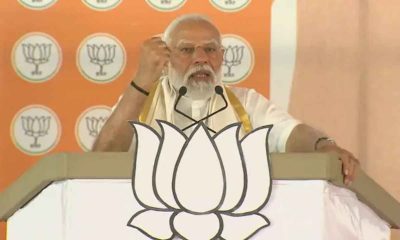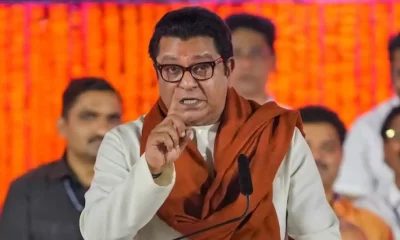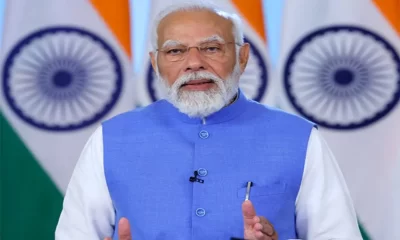India News
India-China standoff: the rhetoric deteriorates

[vc_row][vc_column][vc_column_text]By Rajesh Sinha
A war of words has erupted between India and China over the standoff between their armies in Sikkim sector with a hardening of Chinese stance and its commentators not ruling out an armed conflict unless the situation is handled properly.
As the standoff at the Doklam area entered the third week, Chinese official media and think-tanks said that “war is possible if the conflict between India and China is not handled properly”. Calling India’s action in Sikkim a “betrayal”, China on Monday said it will take every action to safeguard its borders and countered Defence Minister Arun Jaitley’s remarks saying that China of 2017, like India, is also different from 1962. It warned, “China will take all necessary measures to safeguard its territorial sovereignty” and repeated that India pull back the soldiers who Beijing accuses of entering its territory on the other side of the Sikkim border.
India had rushed additional troops to the area that is witnessing a standoff between the two countries, to engage the Chinese army in a non-combative mode. Jaitley, responding to China’s oblique reference to the war the two countries had fought 55 years ago and asking India to learn from “historic lessons”, had said, “If they are trying to remind us, the situation in 1962 was different and India of 2017 is different.”
He had also held China responsible for the current standoff between Indian and Chinese troops in the Sikkim sector.
Responding to Jaitley’s remarks, Chinese foreign ministry spokesman Geng Shuang said, “He is right in saying that India in 2017 is different from 1962; just like India, China is also different.”
He said China’s border with India in Sikkim is well-demarcated and the Indian Army’s action there over the last month is a “betrayal” of the position taken by successive Indian governments. “Former Indian Prime Minister Jawaharlal Nehru endorsed the 1890 Sino-British Treaty on Sikkim in a letter to the then Chinese counterpart Zhou Enlai in 1959. Successive Indian governments have also endorsed this,” Shuang said at a media briefing.
He said India needs to observe the Treaty and pull back troops immediately from Doklam. “I would like the Indian side to respect the 1890 treaty immediately and pull back the border troops which have crossed into Chinese territory back to the Indian side of the boundary. China will take all necessary measures to safeguard its territorial sovereignty,” he warned.
Geng accused India of using Bhutan as a cover up for its “illegal entry” into the Doklam area over which Bhutan has lodged a protest with the Chinese government.
“In order to cover up the illegal entry of the Indian border troops, to distort the fact and even at the expense of Bhutan’s independence and sovereignty, they try to confuse right from wrong, that is futile,” Geng said. He said China has “no objection to normal bilateral relations between India and Bhutan but firmly opposed to the Indian side infringing on Chinese territory using Bhutan as an excuse”.
Beijing made a formal protest last week, accusing Indian border guards of crossing from the north eastern state of Sikkim into its Tibetan territory to stop the road building. The new hotspot has emerged in a remote scrap of territory where the frontiers of China, India and Bhutan meet.
India said on Friday that China’s People’s Liberation Army (PLA) troops entered the area to unilaterally construct the road. “India is deeply concerned at the recent Chinese actions and has conveyed to the Chinese government that such construction would represent a significant change of status quo with serious security implications for India,” the Ministry of External Affairs (MEA) said in a statement. “India cherishes peace and tranquillity in the India-China border areas. It has not come easily,” it said, urging Beijing to resolve the skirmish through dialogue.
Bhutan also lodged a formal protest to China, saying the road violated a bilateral agreement. China insists that it has every right to build the road and that it controls the territory under an 1890 accord made with Britain when it was colonial power in the region.
Playing Chinese checkers with borders
A report in The Times of India quoted strategic affairs expert Brahma Chellaney, to say China is deliberately conflating two separate issues – the delineation of the tri-junction points and PLA’s forcible attempt to change status quo by building a strategic highway through the Doklam plateau.
To mount pressure on India and stake a maximalist position, Beijing has released, as Chellaney said, dubious maps laying claim to areas that are south of the tri-junction points as determined and perceived by India. It is through such constructions that Beijing alleges that Indian troops crossed over to the Chinese side. The attempt is to forcefully alter the ground positions to China’s advantage.
If India relents, it will keep losing control of areas and will also be seen to be letting down Bhutan, said the ToI report quoting a former official conversant with the dispute.
Moreover, as New Delhi pointed out last week, India and China reached an understanding on the Sikkim sector in 2012 to discuss and finalise the boundary’s demarcation under the Special Representatives framework. “In this context, for Beijing to cite an 1890 colonial-era agreement on Sikkim makes little sense other than to confound the real issue at stake. That colonial-era accord is of no direct relevance to China’s road building through Doklam,” Chellaney said.
The citing of the 1890 Sikkim-Tibet agreement is interesting as it coincides with the disdain expressed by Beijing for the 1984 Sino-British accord, which paved the way for Hong Kong’s handover in 1997, saying that it no longer had binding power.
A small State, Sikkim is of crucial strategic importance to India. Located between Nepal, Bhutan and China, it is at the head of a narrow stretch of land known as the “chicken’s neck” that links the north-eastern States to the rest of India. Of the 3,488-km-long India-China border from Jammu and Kashmir to Arunachal Pradesh, a 220-km section falls in Sikkim.
In retaliation for the Indian army’s action, Beijing has blocked the entry of Indian pilgrims hoping to cross the Sikkim border to visit Mount Kailash in Tibet, which violates a two-year-old accord.
The Possible Context
The military stand-off at Sikkim comes amid emergence of other points of conflict.
China is blocking India’s efforts to become a member of the Nuclear Suppliers Group, the international club that controls the global nuclear trade.
Delhi has also objected to the China Pakistan Economic Corridor that passes through Pakistan-occupied Kashmir (PoK). India wants to keep Kashmir as a bilateral issue, but with the introduction of China and CPEC, it could become an international issue.
China also sees growing India-US ties with suspicion. A state-run daily said on Monday India’s objection to China building a road in the Sikkim sector ahead of Prime Minister Narendra Modi’s visit to the US was aimed at demonstrating to Washington its “firm determination” to “constrain” China’s rise. The article in the Global Times said: Modi took two measures to brace for his meeting with Trump. The first one was to seal a weapons deal with the US. For America, the weapons deal will not only reap enormous monetary gains from India but also strengthen India’s advantage in the Indo-Pacific region to check China.
“The other measure aimed to demonstrate to the US India’s firm determination to constrain China’s rise,” said the article written by Liu Zongyi, senior fellow of the state-run thinktank, the Shanghai Institutes for International Studies.
“For example, Indian troops crossed the undisputed Sikkim section of the China-India border and impeded Chinese workers from building roads a few days before Modi’s visit to the US,” it said on the ongoing standoff in Doklam.
In addition, the Indian government has started an anti-dumping probe into Chinese products, the article said, adding that the Modi administration sought US support at the cost of China-India ties and has taken a lead in containing China’s rise.[/vc_column_text][/vc_column][/vc_row]
2024 Lok Sabha Elections
Lok Sabha election 2024: Nearly 50% voter turnout recorded in second phase till 3 pm
The constituencies going to polls today include all 20 Lok Sabha seats in Kerala, 14 in Karnataka, 13 in Rajasthan, and others spread across different states.
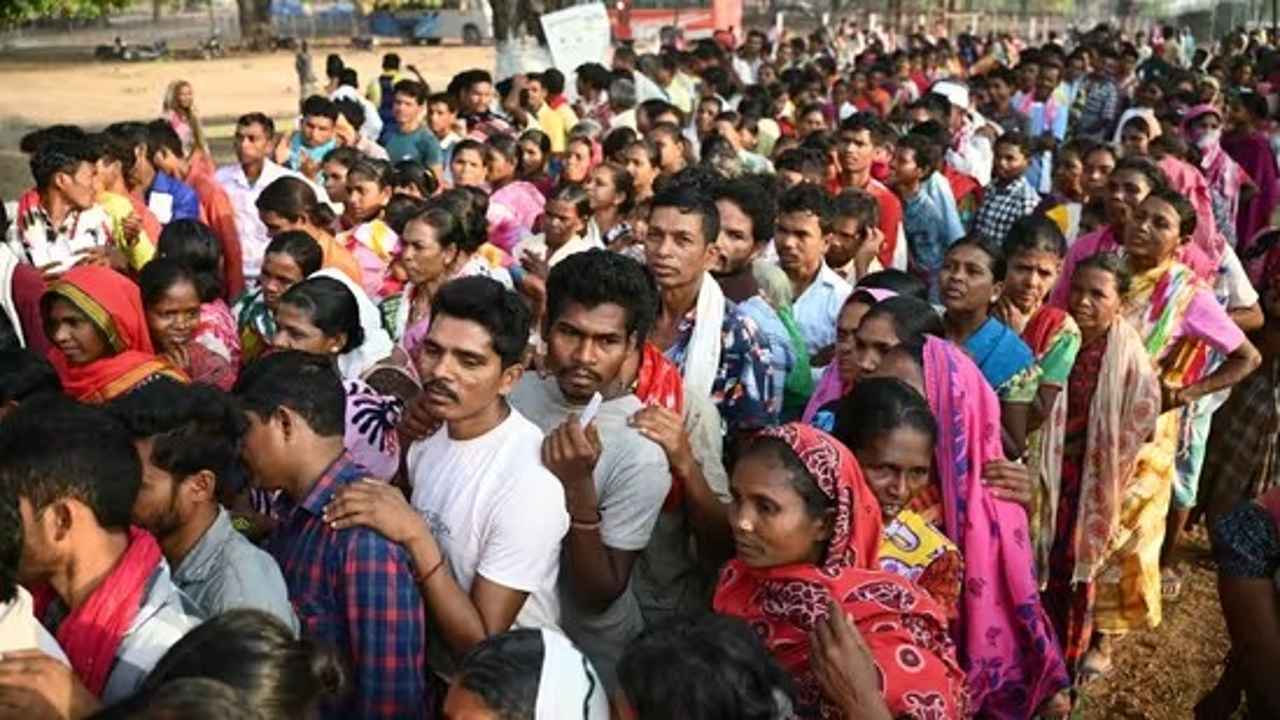
In the second phase of Lok Sabha elections 2024, over 50% of voters were registered in 13 states and the UTs till 3 p.m. 65% of voters participated in the first round of the Lok Sabha elections.
The 18th Lok Sabha elections are currently in their second phase, with voting for 88 seats taking place across 13 states and union territories. There are more than 1,200 people running for office, four of them are from outside Manipur.
Union minister Rajeev Chandrasekhar, BJP members Tejasvi Surya, Hema Malini, and Arun Govil, Rahul Gandhi and Congress leader Shashi Tharoor, DK Suresh, the brother of Karnataka Deputy Chief Minister DK Shivakumar, and former chief minister HD Kumaraswamy are among the notable contenders for the second phase.
In 2019, the NDA had won 56 of the 89 seats and the UPA 24. Six of these seats have been redrawn as part of the delimitation exercise.
The first phase of the seven stages of the elections took place on Friday, including 102 seats spread across 21 states and Union territories. Voter turnout was about 65.5% in the first phase, according to the reports.
In biggest festival of democracy, people from all walks of sector took part in it. A video went viral where former India captain and current Indian team head coach Rahul Dravid and former India player and head coach Anil Kumble were seen standing in line to cast their vote.
Meanwhile, voting started at 7 a.m. and will end at 6 p.m. The Election Commission has extended voting hours for those who are in line by an hour. According to Election Commission figures, the first two hours saw a 9.3% voter turnout throughout the 88 constituencies. By 9 am, Kerala had recorded 8.52%, Karnataka 9.21%, and Madhya Pradesh 13.82%.
In this phase, there were about 15.88 crore eligible voters, comprising 5.929 third-gender electors, 8.08 crore males, and 7.8 crore women. 3.28 crore young voters, aged 20 to 29, are among them; 34.8 lakh of them are first-time voters.
2024 Lok Sabha Elections
Lok Sabha elections 2024: 102-year-old man walks to polling booth to cast his vote in Jammu
The lowest voter turnout so far was noted in Ramgarh at 1.53%.
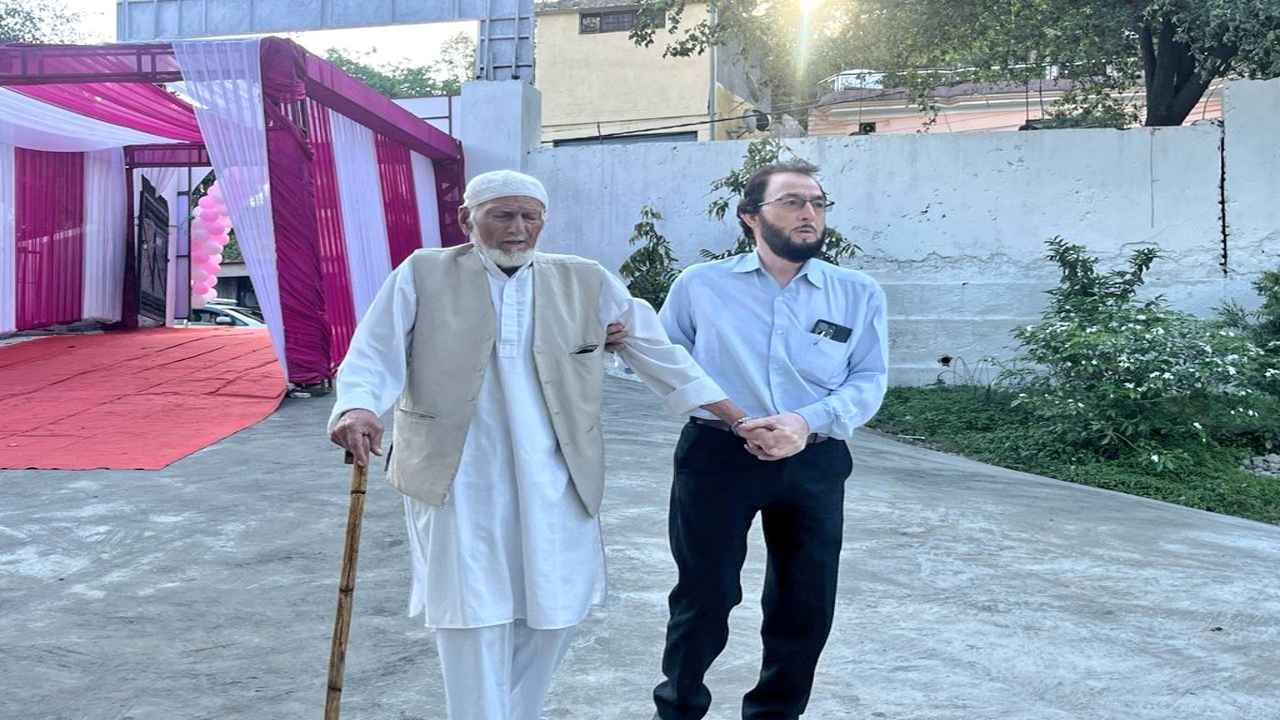
A 102-year-old man showed up at a Jammu polling place to cast his vote in the second phase of the Lok Sabha elections on Friday. Haji Karam Din arrived at the Reasi district polling place in the Jammu constituency with a walking stick in hand and a family member who assisted him with the pre-voting process.
Haji Karam Din, who is 102-year-old, showed his inked finger and posed for pictures outside the polling booth after casting his vote. He said voting at this polling place at this age makes him very happy. He has always cast his vote. Even at the age of 102, this experience is still ongoing, he said.
Reasi district is a part of the Jammu parliamentary constituency, and 22 candidates are up for vote with around 17.81 lakh eligible voters.
BJP’s sitting member Jugal Kishore Sharma is aiming for a third term in office following wins in the elections of 2014 and 2019. Former minister and Congress candidate Raman Bhalla is his main opponent.
Voting in the Jammu-Reasi Lok Sabha constituency began with eager voters showing up at the polling places. Some of them were wearing traditional Dogra attire.
In 2,416 polling places around the constituency, voting got underway at 7 a.m., and 10.39% of the total votes were cast by 9 a.m. In the 2019 Lok Sabha elections, Jammu recorded a 74% voter turnout.
Following the repeal of Article 370 and the division of the former state into two Union Territories five years ago, this is Jammu’s first significant election.
The Akhnoor segment received the highest percentage of votes, 14.24%, followed by Reasi (14.13%), Gulabgarh (13.53%), Shri Mata Vaishnodevi (12.71%), Marh (12.31%), Samba (8.56%), R S Pura Jammu South (8.17%), and Suchetgarh (5.67%), according to the officials. Ramgarh recorded the lowest voter participation of 1.53% so far.
Low attendance was observed in the border areas of the districts of Jammu and Samba till nine in the morning, according to poll data.
The officials said that big lines of voters were observed at several polling places throughout Jammu city. Voters were observed heading towards polling places early in the morning.
India News
Salman Khan house firing case: NIA interrogates arrested shooters Sagar Pal, Vicky Gupta for three hours
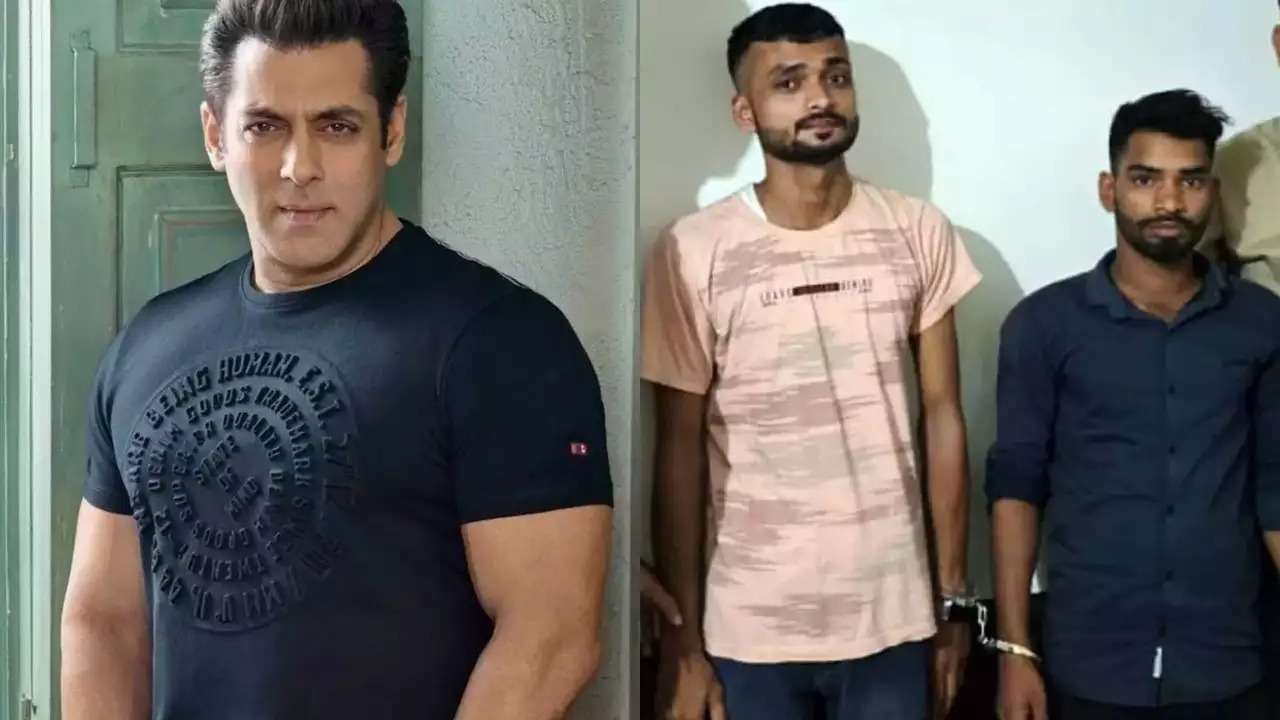
The investigation into the shocking firing incident that took place outside Salman Khan’s house on April 14 keeps bringing new updates with every passing day. In this case, Sagar Pal and Vicky Gupta, the two suspected shooters, have already been taken into custody.
The two shooters have reportedly been questioned by the National Investigation Agency (NIA), according to a new development. Every day that goes by, more information is revealed about the inquiry into the shocking firing incident that happened outside Salman Khan’s house on April 14. Sagar Pal and Vicky Gupta, the two accused shooters, are being held in custody after their first arrests.
It was recently discovered that the two shooters were questioned by the National Investigation Agency (NIA).
NIA has reportedly begun questioning Sagar Pal and Vicky Gupta, who were detained a few days ago for firing openly outside Salman Khan’s Galaxy Apartments in Mumbai, according to a recent update posted on their X (Twitter) account. NIA has interrogated shooters Vicky Gupta and Sagar Pal, arrested in the firing case, the tweet said.
According to the reports, two Punjabi residents were taken into custody by the Mumbai Crime Branch yesterday on suspicion of being involved in the recent shooting incident outside the house of Bollywood actor Salman Khan.
The two men, Sonu Subhash Chander and Anuj Thapan, provided guns to Sagar Pal and Vicky Gupta, the shooters, according to information released by the Mumbai Crime Branch. It was also reported that they had communication with the Bishnoi gang. For those who don’t know, hours after the incident, Anmol Bishnoi, the brother of gangster Lawrence Bishnoi, allegedly took credit for the firing in a Facebook post.
The shooters’ custody has been extended by Mumbai’s Esplanade Court until April 29.
Meanwhile, on the workfront Salman Khan was last seen in Tiger 3 alongside Katrina Kaif.
-
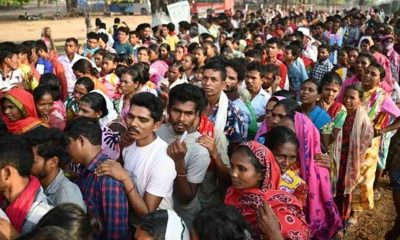
 2024 Lok Sabha Elections18 hours ago
2024 Lok Sabha Elections18 hours agoLok Sabha election 2024: Nearly 50% voter turnout recorded in second phase till 3 pm
-
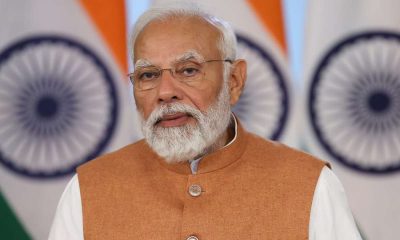
 2024 Lok Sabha Elections23 hours ago
2024 Lok Sabha Elections23 hours agoPM Modi calls for high voter turnout in second phase of Lok Sabha elections 2024, says your vote is your voice
-

 India News22 hours ago
India News22 hours agoSalman Khan house firing case: NIA interrogates arrested shooters Sagar Pal, Vicky Gupta for three hours
-
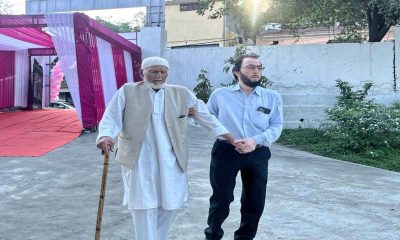
 2024 Lok Sabha Elections21 hours ago
2024 Lok Sabha Elections21 hours agoLok Sabha elections 2024: 102-year-old man walks to polling booth to cast his vote in Jammu
-

 2024 Lok Sabha Elections16 hours ago
2024 Lok Sabha Elections16 hours agoElection Commission books BJP MP Tejasvi Surya for seeking votes in the name of religion

